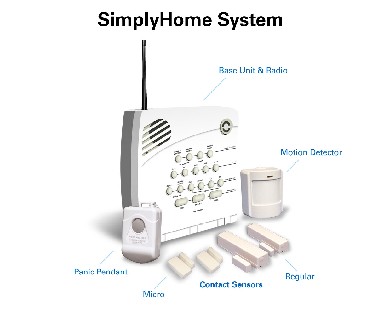Home Monitoring as Long Term Care
Gary Wolf
May 25, 2008
This story from the New York Times today gave me a sense of how far along the personal monitoring movement has come in the last few years.
…Sensors attached to the wall are able to register when Mrs. Trost gets out of bed and whether she stops at her medication dispenser, and to alert her daughters to any deviations from her routine that might indicate an accident or illness. The family is updated by electronic report every morning.
Monitoring systems like these, which go far beyond the emergency response buttons that have been around for years, are not found in many homes yet. Privacy is an issue for some older people, and the basic package can range from $50 up to $85 a month for the motion sensors and remote monitoring system like Mrs. Trost uses. More comprehensive packages can include devices to track blood pressure, weight or respiration.
Experts on aging say the systems will become commonplace as the 76 million baby boomers approach ages when disabilities or conditions like diabetes and failing eyesight jeopardize the ability to live independently. The population of those 65 years and older is almost 40 million today, and the federal Census Bureau says that will more than double, to nearly 87 million, by midcentury….
The growing number of Alzheimer’s sufferers, which is expected to more than triple from the current four million by 2050, may also spur wider adoption of technologies like motion sensors to alert others to deviations in routine, trackers to assure medications are taken and emergency response buttons….
The story by Elizabeth Olson gives a good general description of how personal monitoring is being used to supplement care for the elderly. It only mentions two specific technologies currently in use. They are: Motion sensors that can inform relatives or care-givers when a person has gotten out of bed, and whether there’s been a stop at the medicine cabinet.
Blood pressure monitors and scales that automatically note anomalies and send alerts to doctors.
Examples of the first of these are not hard to find. One of the companies offering them is Simply Home, which sells a programmable motion detecting system designed to identify ominous changes in behavior.

This system is not cheap: $400, plus $54 per month. At first it seems rather Byzantine – alerts go via two way radio to a central processing station and are automatically send back out to relatives or care givers via the Web and PDAs. But when you realize that there is no call center, no live monitoring, but rather just a data center than processes the alerts and resends them; suddenly, it makes good sense. The data can be interpreted by somebody who knows the person being monitored. Simple rules become useful; if such-and-such a door isn’t opened by 9 a.m., send an alert…”
The integration of human watchers into automated systems will be one of the things that makes them smarter more quickly than most people expect. These watchers are not anonymous employees, but relatives and friends, picking up cues from the data stream, and making inferences immediately based on their knowledge of your patterns of life.


